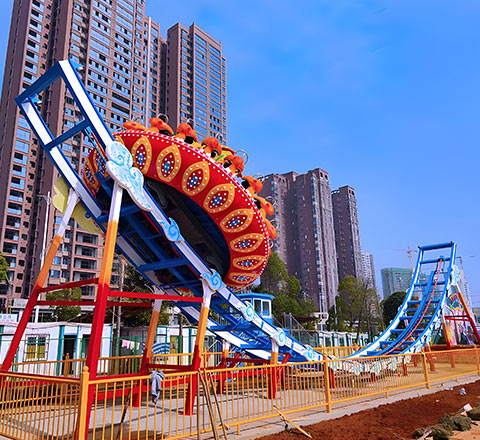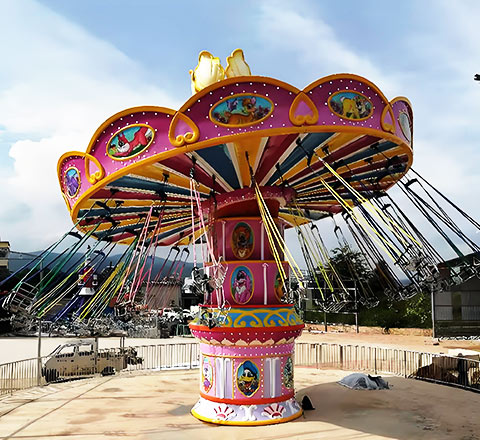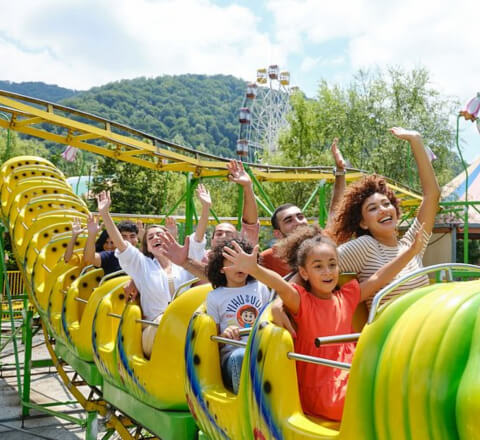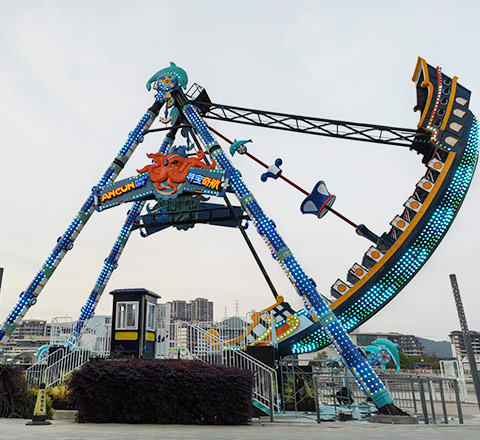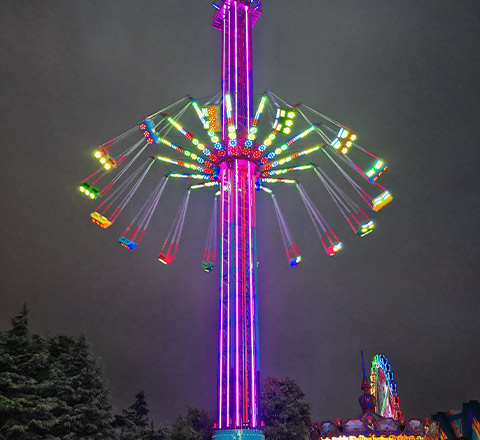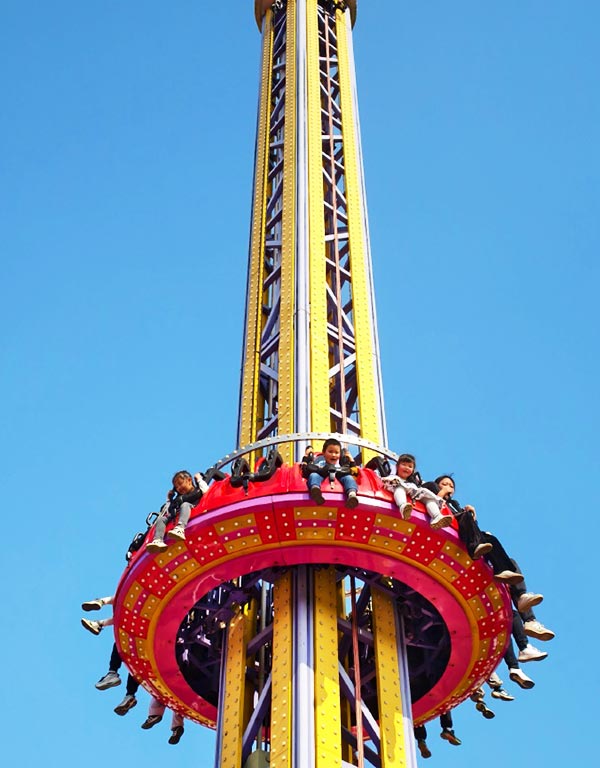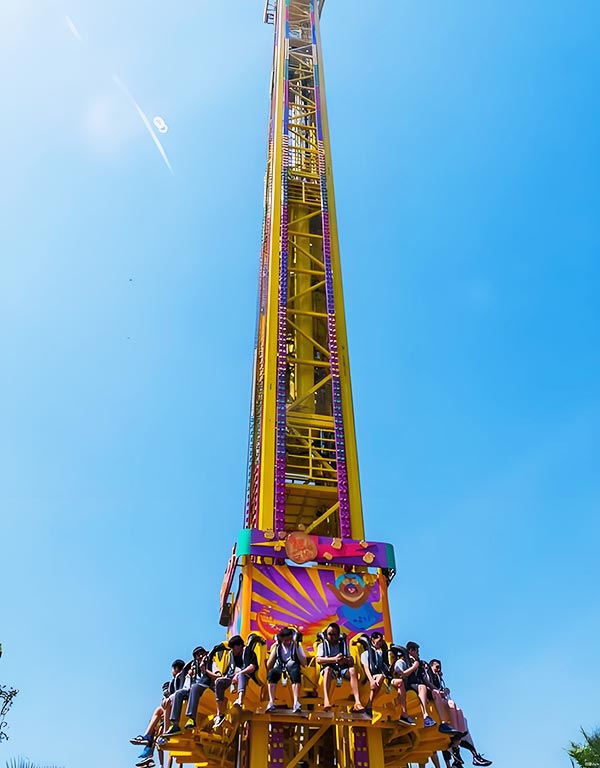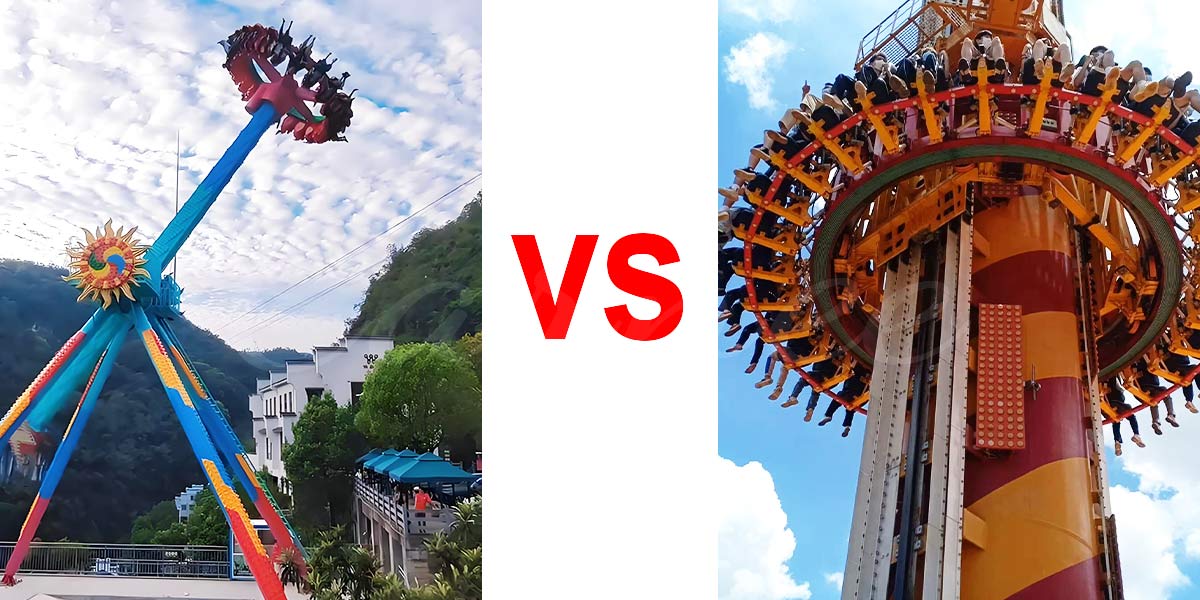
Introduction
When designing or upgrading an amusement park, pendulum rides and drop tower rides are often the centrepieces that define the park’s thrill level.
Both rides promise heart-racing experiences, but they deliver excitement in different ways — one through swinging motion and centrifugal force, the other through pure free fall acceleration.
In this article, we’ll explore their differences, compare the weightless sensations, discuss pricing and installation considerations, and help you decide which ride better suits your venue.
What Is a Pendulum Ride?
A pendulum ride is a large, dynamic attraction that combines rotational spin with back-and-forth swinging motion.
Riders are seated in a circular gondola that swings to extreme heights — often more than 40 metres — while rotating rapidly around its axis.
At the peak of each swing, passengers experience near-weightlessness, as gravity briefly cancels out the upward momentum.
This combination of motion and height makes the pendulum ride one of the most popular thrill attractions in modern parks.
Depending on design and capacity, pendulum rides can range from mini models for family parks to giant 360° pendulum rides that complete full rotations.
If you’re planning to install one, you can explore full specifications, themes, and seating options at Pendulum Rides for Sale.
What Is a Drop Tower Ride?
A drop tower ride — also known as a free fall tower — delivers an entirely different kind of thrill.
Instead of swinging, riders are lifted vertically to the top of a tall tower, then released into a rapid descent that simulates free fall.
For a few seconds, the passengers experience complete weightlessness before a magnetic or hydraulic braking system slows the car safely near the base.
Modern drop towers often range between 30–100 metres, offering both visual impact and unmatched intensity.
You can learn more about designs and customisation options at Tower Rides for Sale.
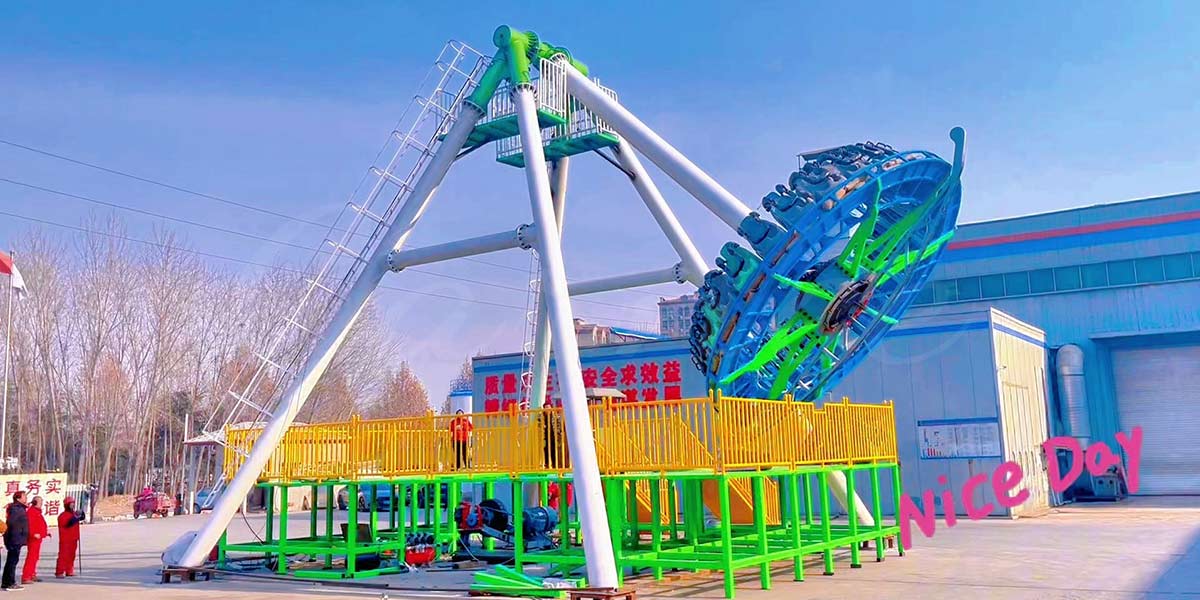
Pendulum Ride vs Drop Tower Ride: How They Work
| Feature | Pendulum Ride | Drop Tower Ride |
| Type of Motion | Swinging + Rotating | Vertical Free Fall |
| Main Force | Centrifugal + Gravity | Gravity + Deceleration |
| Weightlessness Duration | Repeated cycles | Short, intense burst |
| Height Range | 8m – 45m | 30m – 100m |
| Ride Time | 2–3 minutes | 30–90 seconds |
| Best For | Continuous excitement | Extreme adrenaline hit |
The pendulum ride offers repetitive thrills as it swings and spins, while the drop tower focuses on instant, vertical acceleration.
Both are visually striking, but the sensations they create are fundamentally different.
For a deeper look at how drop towers operate, check out How Do Drop Tower Rides Work?.
Which Ride Feels More Weightless?
The feeling of weightlessness — that floating sensation when your body briefly lifts from the seat — is central to both rides.
- On a drop tower amusement ride, the weightless moment happens suddenly during the descent. It’s intense, short-lived, and feels like jumping from a plane.
- On a pendulum amusement ride, the sensation occurs multiple times during each swing, producing a more rhythmic, wave-like floating experience.
So while the drop tower delivers a sharper and stronger burst of free fall, the pendulum carnival ride gives riders repeated cycles of lighter, smoother weightlessness.
Each appeals to a different type of thrill-seeker — one who loves sudden shock versus one who enjoys sustained excitement.
The Visitor Experience: Which One Draws More Crowds?
Both rides are top performers in terms of visual impact and crowd appeal.
However, their draw often depends on your park’s positioning:
- Pendulum rides are ideal for both family-friendly and extreme parks. Their continuous swinging motion keeps guests engaged for longer, and the large, dynamic movement makes them a perfect centrepiece attraction.
- Free Fall Drop towers create powerful first impressions and become bucket-list rides for adrenaline lovers. The tower’s height alone draws attention from afar, making it a great marketing symbol.
Many large amusement parks combine both — using the pendulum ride for sustained throughput and the drop tower carnival ride as the headline thrill.
For inspiration, explore our guide: Carnival Swing Ride vs. Swing Tower Ride: What’s the Difference?.
Cost Comparison and Installation Considerations
The cost of a pendulum ride varies widely depending on capacity, height, and custom features such as LED lighting, theming, and sound effects.
Smaller pendulum ride models (12-seater) may cost between $25,000–$40,000, while large-scale 30-seater or 360° pendulum rides can exceed $500,000–$1 million.
In contrast, drop tower rides generally have higher costs due to complex lifting systems, braking mechanisms, and foundations.
A mid-size drop tower (around 40 metres) typically ranges from $600,000–$1.2 million, with taller versions going beyond $2 million.
Every pendulum amusement ride is custom-engineered, meaning its price reflects structural strength, safety certification, and design complexity — not just materials.
For investors, consider not only the purchase cost but also the installation, maintenance, and long-term reliability.

Safety Standards and Reliability
Both rides are engineered under strict international safety standards (EN, ASTM, and GB codes).
Safety systems include:
- Multi-point restraint harnesses
- Emergency hydraulic brakes
- Overspeed protection devices
- Computerised monitoring systems
Leading manufacturers conduct extensive testing and simulation before production.
To learn more about maintenance and testing processes, read Pendulum Rides FAQ: Everything You Need to Know.
From an Investor’s View: Which Ride Offers Better ROI?
If your goal is to increase guest engagement and maximise capacity, the pendulum ride often provides higher throughput — accommodating more riders per hour with moderate power consumption.
The drop tower carnival ride, on the other hand, offers stronger marketing value and can quickly become your park’s signature landmark.
- Pendulum rides: Lower operational cost, repeat appeal, ideal for medium and large parks.
- Drop tower rides: Premium installation, ideal for flagship theme parks aiming for extreme thrills.
Ultimately, the best investment depends on your budget, target audience, and park layout. (Learn more: Drop Tower Rides For Sale)
FAQ: Pendulum Ride vs Drop Tower Ride
For detailed insight into tower attractions, see Everything You Need to Know About Drop Tower Rides.
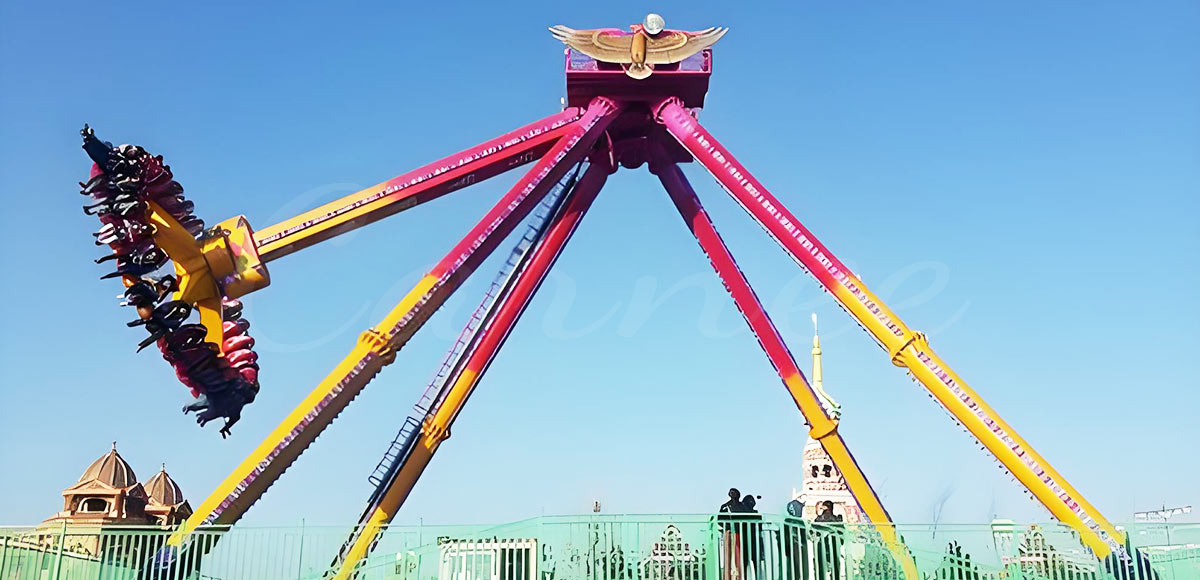
Conclusion
Both pendulum rides and drop tower rides are exceptional investments that bring intensity, excitement, and visibility to amusement parks.
Each offers a different thrill experience — the pendulum with its continuous rhythm and swing, and the drop tower with its breathtaking free fall.
If your park targets a broader audience and prioritises repeatability, a pendulum ride may be the perfect choice.
If you want an extreme, headlining attraction to define your skyline, a drop tower ride could be the ideal fit.
Whichever you choose, Carnee Rides provides custom design, manufacturing, and installation solutions to match your park’s size, theme, and capacity goals.
Contact us to explore your next thrill ride investment and turn your concept into a landmark attraction.

